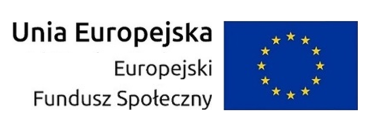Cotygodniowe seminarium badawcze
Organizatorzy
- prof. dr hab. Grzegorz Łukaszewicz
Informacje
czwartki, 12:30 , sala: 5070Dziedziny badań
Lista referatów
-
8 stycznia 2015 12:30
Jan Peszek (Uniwersytet Warszawski)
Mathematical description of flocking
I will discuss the recent developments in the mathematical description of flocking with singular allignment force and how this singularity affects the possibility of the emergence of phenomena with new qualities.
-
18 grudnia 2014 12:30
Simon Axmann
Steady solutions to the compressible Navier-Stokes-Allen-Cahn system.
The Navier-Stokes-Allen-Cahn system is a diffuse interface model describing a two-phase flow of compressible viscous fluid. We study the existence of steady solutions with bounded density under the assumption of slip boundary condition for the …
-
11 grudnia 2014 12:30
Iwona Skrzypczak (Uniwersytet Warszawski)
Hardy inequalities derived from Caccioppoli. The cases of constant and variable p.
I will discuss Hardy inequalities for general class of functions resulting from Caccioppoli inequalities for solutions to nonlinear problems involving p-Laplacian with constant and variable p.
-
4 grudnia 2014 12:30
Grzegorz Jamróz (IMPAN)
Maximal dissipation in hyperbolic equations - how to select physical solutions?
We first discuss a natural criterion for selection of unique solutions of hyperbolic PDEs - the so-called maximal dissipation criterion. Then we show how to apply it to the so-called Hunter-Saxton equation, known from the …
-
27 listopada 2014 12:30
prof. Edrissa Titi (Weizmann Institute)
Is Dispersion a Stabilizing or Destabilizing Mechanism?
Kolokwium Wydziałowe:Więcej informacji na stronie programu SSDNM: http://ssdnm.mimuw.edu.pl/wyklady
-
20 listopada 2014 12:30
Michał Łasica (Uniwersytet Warszawski)
Regular solutions to a very singular equation
-
13 listopada 2014 12:30
Piotr Kalita (Uniwersytet Jagielloński)
Inkluzje subróżniczkowe: analiza i zastosowanie w mechanice
-
6 listopada 2014 12:30
Piotr Mucha (Uniwersytet Warszawski)
"Directional Do-Nothing conditions", czyli jak ograniczyć obszar nieograniczony zachowując własności rozwiązań
Celem wystąpienia jest przedstawienie krótkie wyników wspólnych z Maltem Braackiem z Kilonii. Tematem badawczym jest wybór odpowiednich sztucznych warunków brzegowych na sztucznym brzegu. Typowym zagadnieniem jest analiza przepływu w rurze nieskończonej. W takim zagadnieniu nie …
-
30 października 2014 12:30
Piotr Rybka (Uniwersytet Warszawski)
Viscosity solutions for closed curves driven by a singular weighted mean curvature
-
23 października 2014 12:30
Ewelina Zatorska (Uniwersytet Warszawski)
O modelu przepływu dwufazowego
Zaprezentuję model przepływu płynu dwufazowego. Fazy ściśliwa i nieściśliwa opisane są odpowiednimi równaniami Naviera-Stokesa, ale zamiast dodatkowego równania na swobodny brzeg oddzielający fazy rozważamy pewną miarę pojawiającą się tylko w obszarach nieściśliwych. Pokażę, że słabe …
-
9 października 2014 12:30
Grzegorz Łukaszewicz (Uniwersytet Warszawski)
Dwa rodzaje asymptotyki czasowej w zagadnieniach mechaniki kontaktowej.
Pokażemy, że asymptotyki czasowe dla zagadnien pierwszego i drugiego rzędu względem czasu w mechanice kontaktowej mogą być istotnie różne (praca wspólna z Piotrem Kalitą z UJ).
-
5 czerwca 2014 12:30
Prof. Miroslav Bulicek
Minimal surface like equations and strain limmiting models in continuum mechanics
Elastic solids with strain-limiting response to external loading represent an interesting class of material models, capable of describing stress concentration at strains with small magnitude. A theoretical justification of this class of models comes naturally …
-
29 maja 2014 12:30
Agnieszka Świerczewska-Gwiazda (Uniwersytet Warszawski)
Niejawne relacje konstytutywne w równaniach różniczkowych cząstkowych
Opowiem o różnych problemach zarówno abstrakcyjnych, jak i pochodzących z mechaniki cieczy, w których pojawiają się uwikłane związki konstytutywne, bądź funkcje nieciągłe. Główną uwagę skieruję na przepływy cieczy nienewtonowskich oraz skalarne prawa zachowania z nieciągłą …
-
22 maja 2014 12:30
I. Denisova (Institute for Problems in Mechanical Engineering , Russian Academy of Sciences)
GLOBAL SOLVABILITY OF A PROBLEM GOVERNING THE MOTION
This is a common work with V. A. Solonnikov (St. Petersburg Department of Steklov Math. Institute, Russian Academy of Sciences). Streszczenie: We deal with the motion of two immiscible incompressible uids in a container. The …
-
15 maja 2014 12:30
Tomoro Asai (U.Tokijski)
Self-similar solution for fourth order curvature flow equation. (A problem with incompatible initial data)
 Nie jesteś zalogowany |
Nie jesteś zalogowany |



















